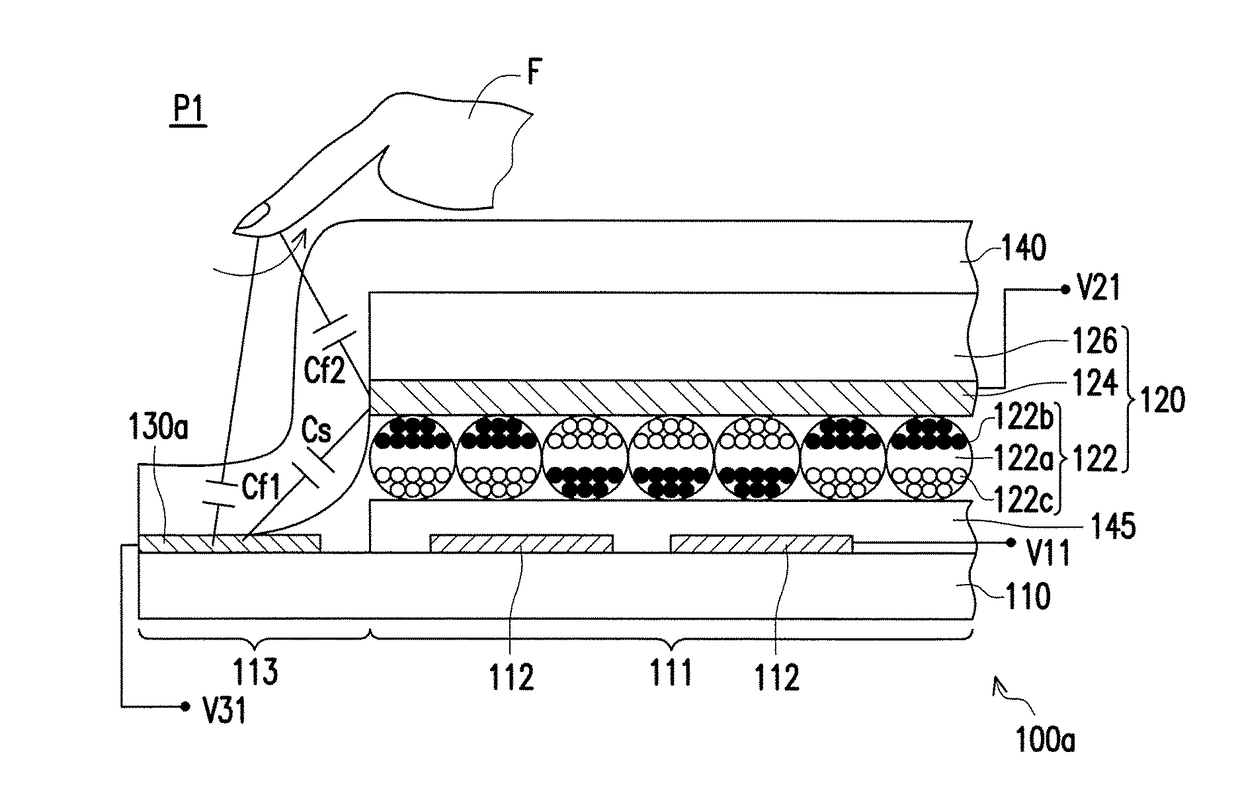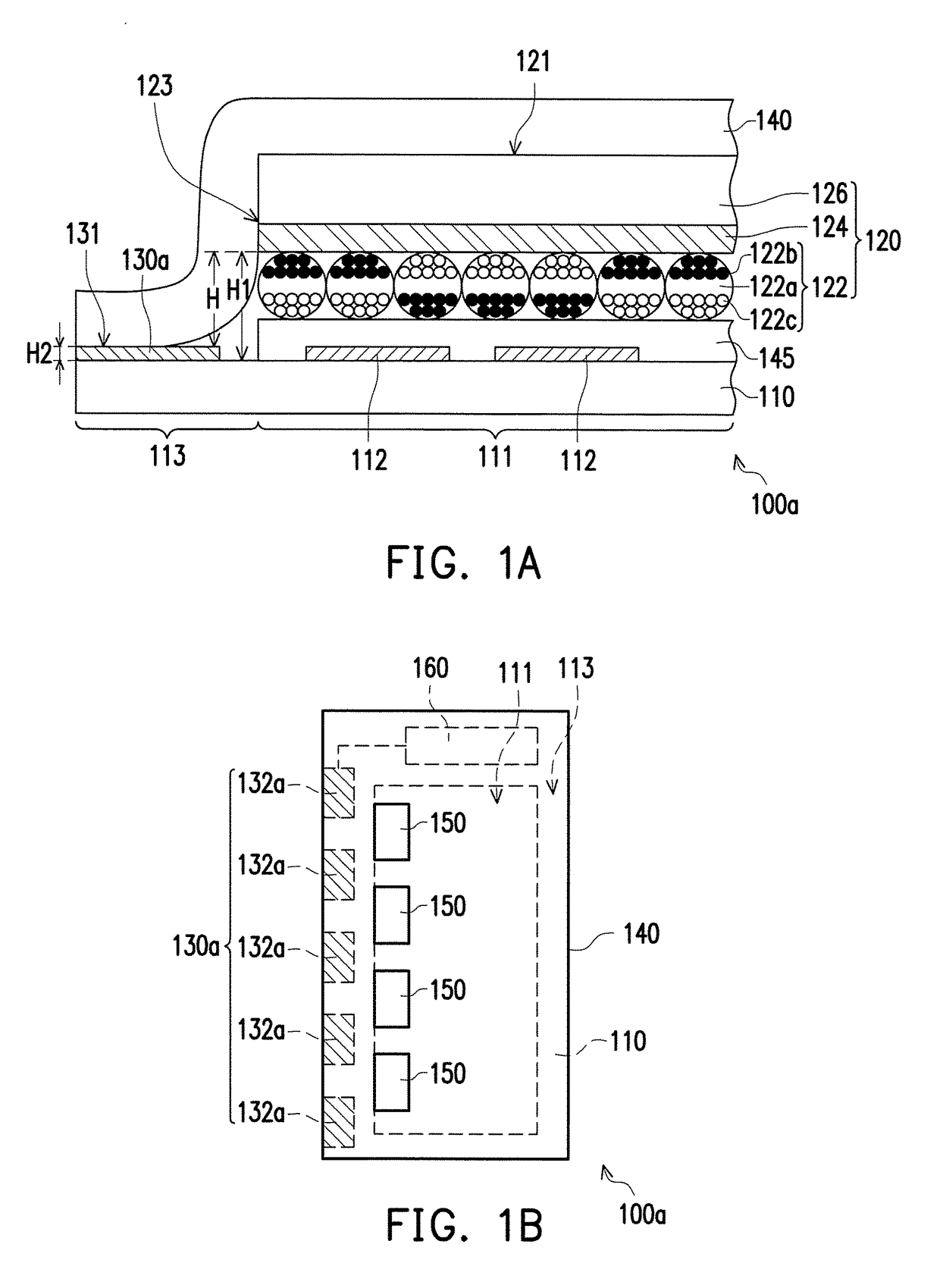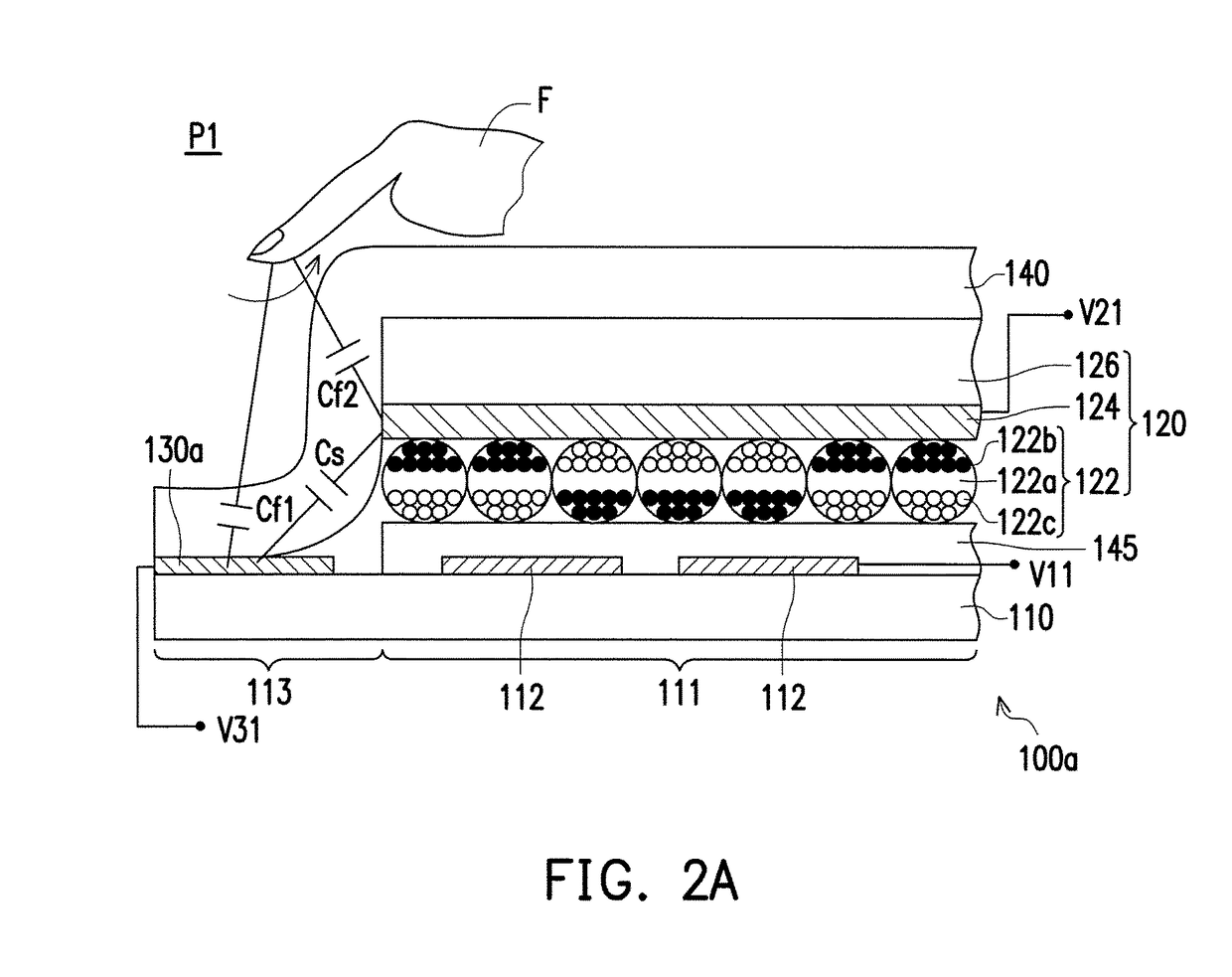Touch display device
- Summary
- Abstract
- Description
- Claims
- Application Information
AI Technical Summary
Benefits of technology
Problems solved by technology
Method used
Image
Examples
Embodiment Construction
[0030]FIG. 1A illustrates a cross-sectional view of a touch display device according to an embodiment of the invention. FIG. 1B illustrates a top view of the touch display device of FIG. 1A. Referring to FIG. 1A and FIG. 1B together, in the present embodiment, a touch display device 100a includes a driving substrate 110, a display module 120, a touch electrode layer 130a and an insulating layer 140. The driving substrate 110 has a display area 111 and a non-display area 113, and the non-display area 113 is located outside the display area 111. The display module 120 includes a display medium layer 122, a transparent conductive layer 124 and a transparent cover plate 126 sequentially arranged on the driving substrate 110 and located in the display area 111. The touch electrode layer 130a is disposed in the non-display area 113 of the driving substrate 110. The insulating layer 140 covers an upper surface 121 of the display module 120 and extendedly covers a top surface 131 of the tou...
PUM
 Login to View More
Login to View More Abstract
Description
Claims
Application Information
 Login to View More
Login to View More - R&D
- Intellectual Property
- Life Sciences
- Materials
- Tech Scout
- Unparalleled Data Quality
- Higher Quality Content
- 60% Fewer Hallucinations
Browse by: Latest US Patents, China's latest patents, Technical Efficacy Thesaurus, Application Domain, Technology Topic, Popular Technical Reports.
© 2025 PatSnap. All rights reserved.Legal|Privacy policy|Modern Slavery Act Transparency Statement|Sitemap|About US| Contact US: help@patsnap.com



